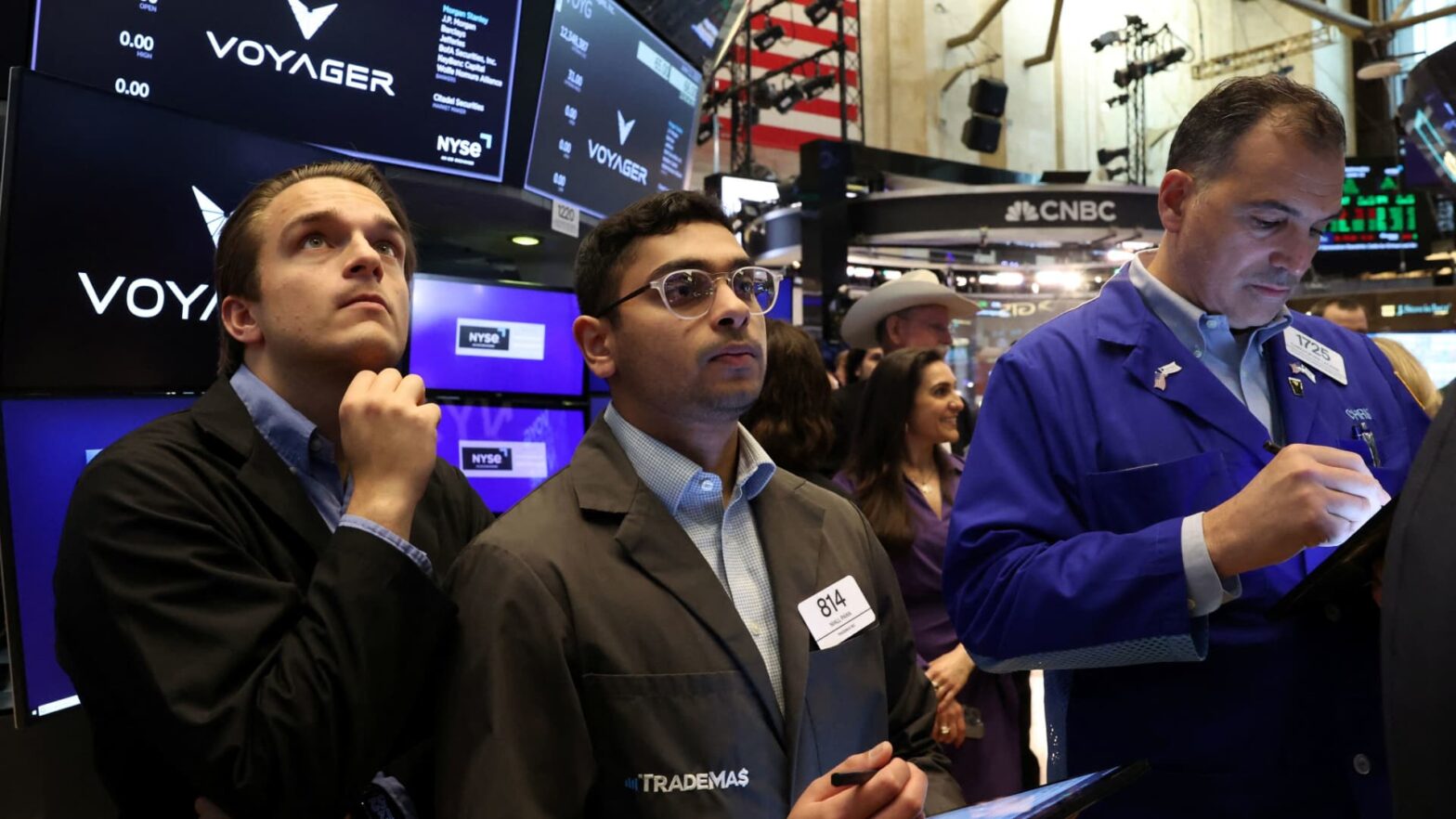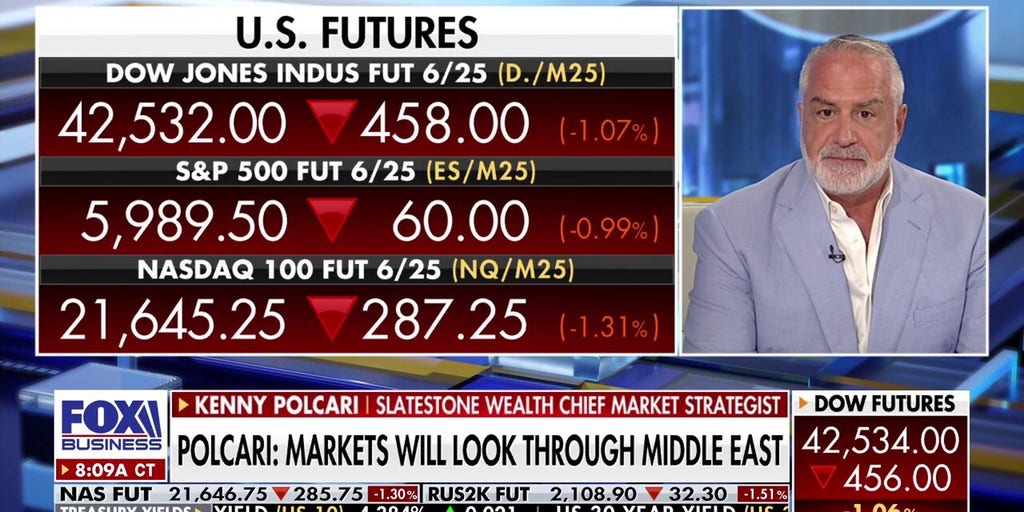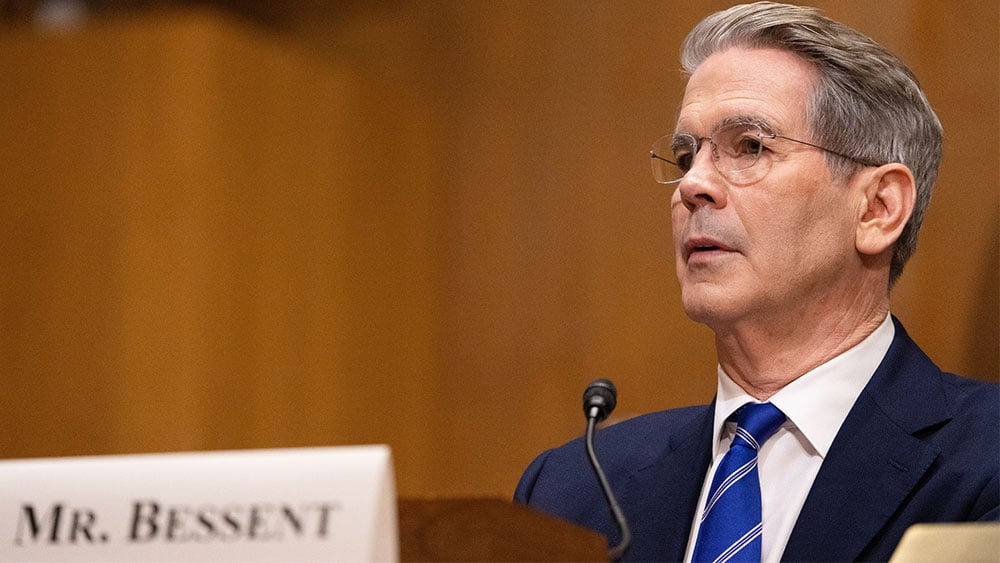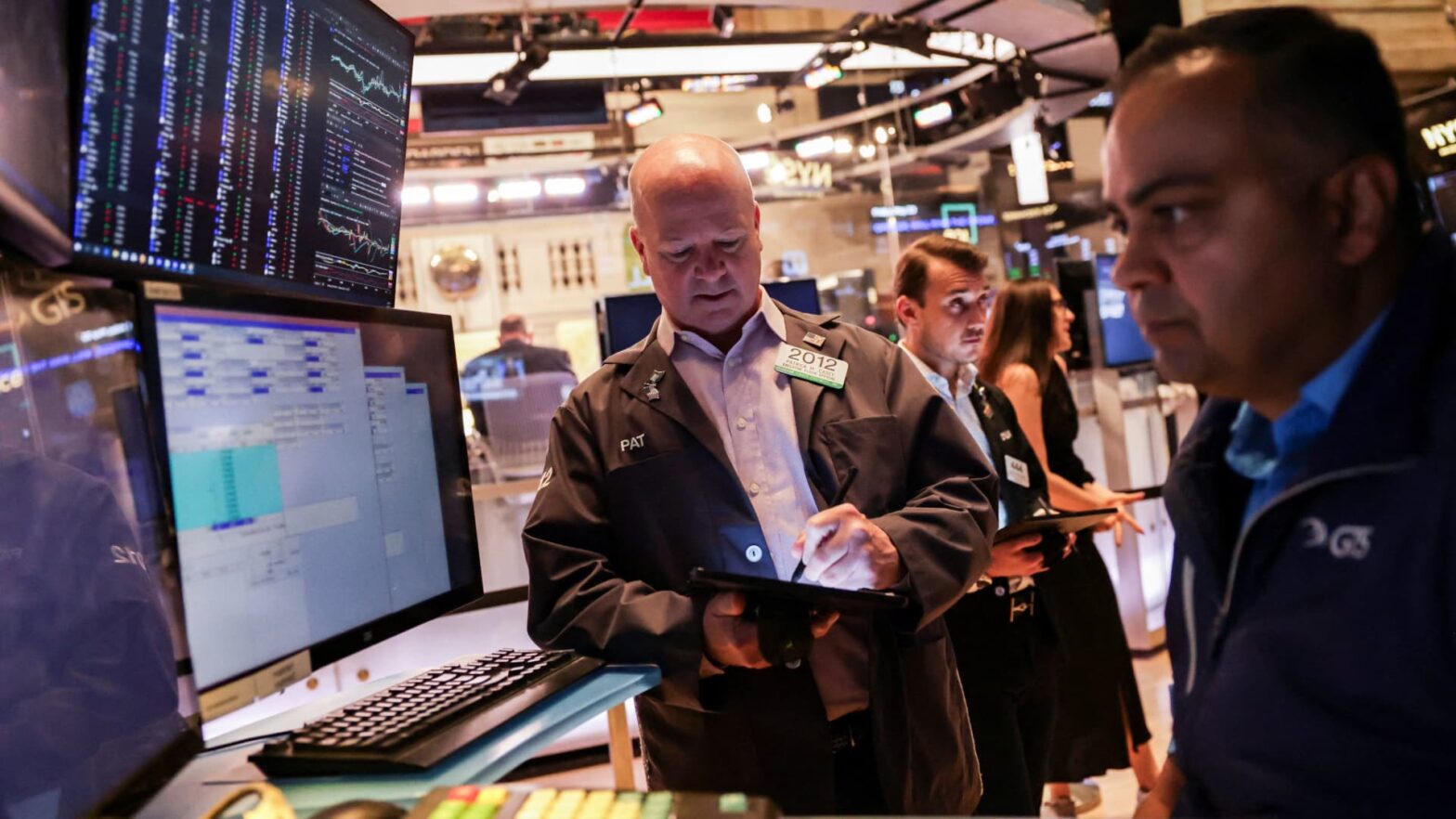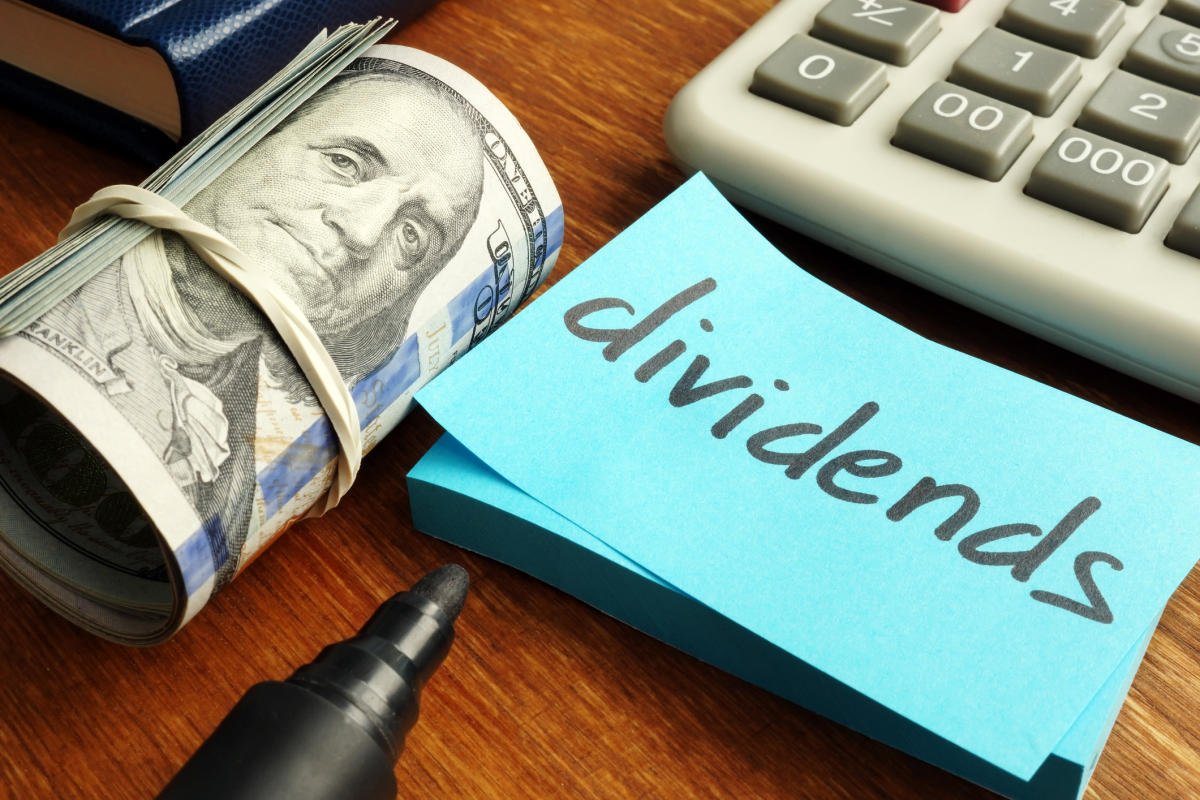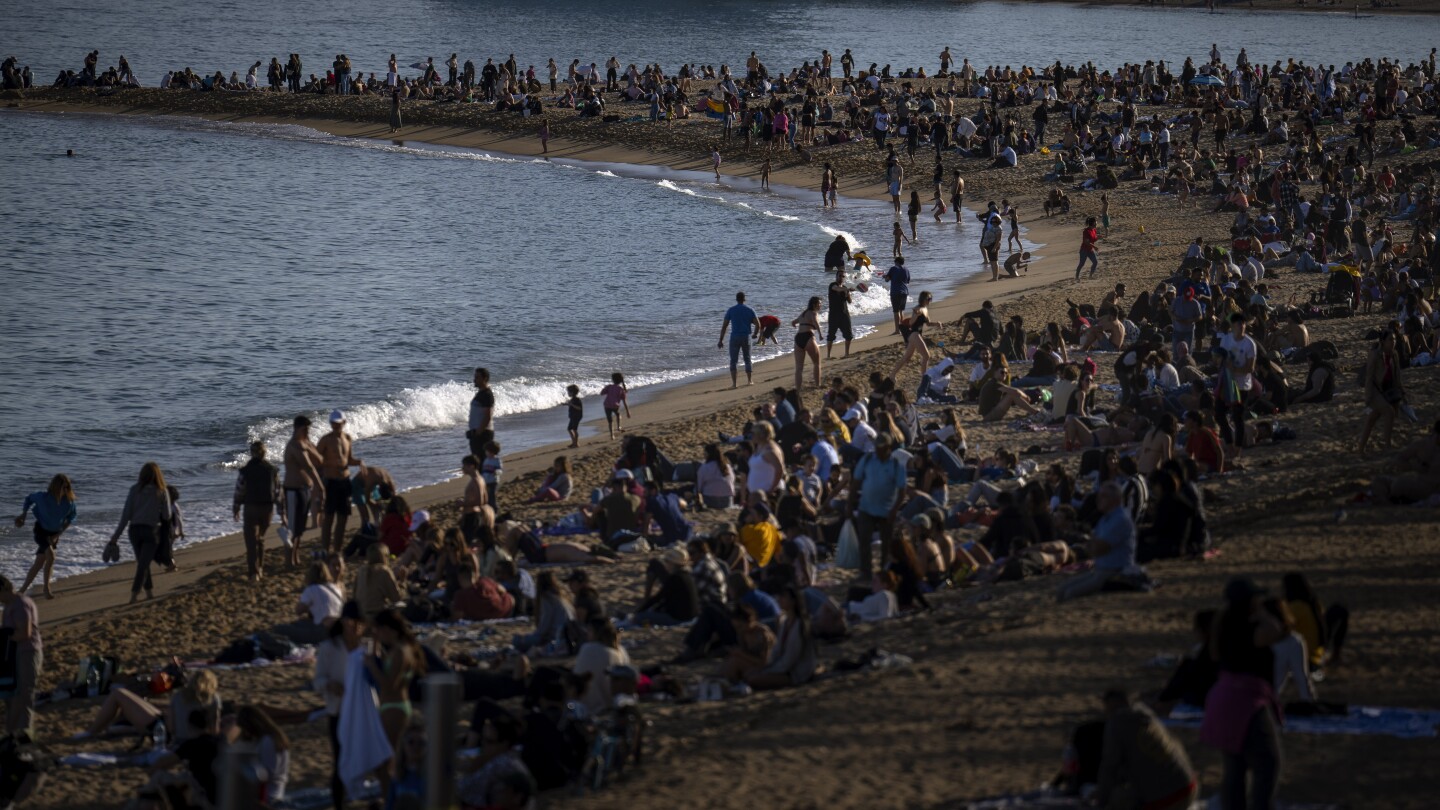Watch live from the New York Stock Exchange.
By The Associated Press
Stocks are rising on Wall Street and around the world to recover some of the historic losses since last week when President Donald Trump announced sharp increases in taxes on goods imported to the U.S.
The S&P 500 was up 3.4% in early trading Tuesday. The Dow Jones Industrial Average was up 1,230 points, or 3.3%, and the Nasdaq composite was 3.6% higher. Overseas markets also rose sharply, and the price of U.S. crude oil rose a bit after touching its lowest level in four years.
What to know:
- China’s remarks: The Commerce Ministry said the U.S.‘s imposition of “so-called ‘reciprocal tariffs’” on China is “completely groundless and is a typical unilateral bullying practice.” It added that the U.S. threat of escalation is “a mistake on top of a mistake” and pledged to “fight until the end.”
- Trump’s theat: If Trump implements his new tariffs on Chinese products, U.S. tariffs on Chinese goods would reach a combined 104%. The new taxes would be on top of the 20% tariffs announced as punishment for fentanyl trafficking and his separate 34% tariffs announced last week.
- Tariff impact on South Africa: The new 30% tariffs set to be imposed on South Africa by the Trump administration will threaten 35,000 jobs in the country’s citrus-growing sector and the economies of entire towns, a farmers group said Tuesday.
Global markets bounce back
The bounce back for global markets on Tuesday perhaps shouldn’t be a surprise. Stocks don’t go in one direction forever, and some of the best days in the market’s history have been clustered around some of its worst days.
The biggest gain for the S&P 500 since World War II was an 11.6% surge on Oct. 13, 2008, for example. That was during the depths of the Great Recession, when worries were high that the financial system was collapsing and the S&P 500 was in the midst of a nearly 57% plunge from its peak in late 2007 until its bottom in March 2009. A couple weeks later, the index had another one of its best days in history, soaring 10.8%.
That’s one of the reasons many financial advisers suggest not trying to time the market and selling stocks and other investments meant for the long term when nervous, because of the risk of missing out on such huge up days.
Small business optimism slips in March
Small business owners’ optimism slipped in March, as they dealt with looming tariffs and other new policies implemented by the Trump administration.
Optimism fell 3.3 points in March to 97.4, according to a poll by The National Federation of Independent Business, which is a widely used gauge of the economic health of small businesses.
The index fell slightly below the 51-year average of 98, following four months above the average.
“The implementation of new policy priorities has heightened the level of uncertainty among small business owners over the past few months.” said NFIB Chief Economist Bill Dunkelberg. “Small business owners have scaled back expectations on sales growth as they better understand how these rearrangements might impact them.”
The gold bounce
After hitting a new high last week, gold prices have tumbled following Trump’s “Liberation Day.” But futures bounced back some Tuesday morning.
The price of New York spot gold hit all-time record on April 2, per FactSet, closing at about $3,134 per Troy ounce — the standard for measuring precious metals — just before Trump unveiled his self-described “reciprocal” tariffs. Prices fell in the days following, closing at nearly $2,982 Monday.
A rebound could be ahead. Futures jumped up to over $3,032 Tuesday morning.
Interest in buying gold typically spikes in times of uncertainty, as anxious investors seek a “safe haven” for parking their money. Many of Trump’s previously-imposed tariffs have helped fuel gold’s gains in recent months, even amid stock market turmoil. But precious metals are also volatile assets, so the future is never promised.
Levi Strauss says any price hikes will be ‘surgical’

In this June 14, 2019, photo people pass the Levi’s store in in New York’s Times Square. Levi Strauss & Co.’s new flagship in Manhattan’s Time Square features larger dressing rooms with call buttons and tailors who can add trims and patches to customers’ jeans. (AP Photo/Richard Drew)
In this June 14, 2019, photo people pass the Levi’s store in in New York’s Times Square. Levi Strauss & Co.’s new flagship in Manhattan’s Time Square features larger dressing rooms with call buttons and tailors who can add trims and patches to customers’ jeans. (AP Photo/Richard Drew)
Levi Strauss executives said on a conference call with investors late Monday said that any price increases it undertakes related to tariffs would be “surgical,” instead of broad-based.
Shares of Levi Strauss rose 9% in early trading after the jeans maker posted better first-quarter profit than Wall Street forecast and said it expected “minimal” impact from tariffs in the second quarter.
“Most of the product for spring, early summer is already in the U.S.,” said chief financial officer Harmit Singh.
Just how much President Donald Trump’s widespread tariffs would affect pricing has been a major concern for investors and analysts because tariffs generally act as a tax that gets passed on to consumers.
Levi earned 38 cents-per-share in the first quarter, easily topping the 28 cents-per-share that analysts forecast.
JUST IN: S&P 500 opens 3.4% higher as some relief washes through financial markets worldwide.
Will the tariffs lead to a recession? Here’s how to know if we’re in one
Economists at Goldman Sachs have raised their assessment of the odds the U.S. will experience a recession — where the economy shrinks and unemployment rises — to 45%, from 35%. Other economists are raising similar alarms, with JPMorgan putting the odds of a recession at 60% and projecting inflation will reach 4.4% by the end of this year, up from 2.8% currently.
Here’s a few things to know about recessions and how they work:
Are there any signs a recession is imminent?
Not yet. But one development that has sparked widespread fear is a real-time economy tracker maintained by the Federal Reserve’s Atlanta branch. As of Monday, it was indicating that the economy could shrink by 0.8% at an annual rate in the first three months of this year, down from 2.4% in last year’s final quarter.
What signals would suggest that a recession has begun?
The clearest signal would be a steady rise in job losses and a surge in unemployment. The government’s weekly report on the number of people seeking unemployment benefits, which is released every Thursday, is being closely watched for signs of rising layoffs. So far, applications for aid remain quite low by historical standards.
What are Trump and his officials saying?
President Donald Trump doubled down on his global tariffs Thursday, likening the U.S. economy to a ‘very sick’ patient who came out of an operation. “It’s gonna be a booming country, very booming country. It’s going to be amazing, actually,” Trump said to reporters aboard Air Force One on his way down to one of his Florida golf clubs.
On Sunday, Trump told reporters that “sometimes you have to take medicine to fix something.” Yet Treasury Secretary Scott Bessent on the same day said “there doesn’t have to be a recession” and that the administration is focused on “building the long-term economic fundamentals for prosperity.”

Ask AP your questions about tariffs
Have a question about how tariffs work? Ask below. We’ll answer a few in live coverage today and across apnews.com.
Tesla’s decline far outpaces S&P 500 average
Tesla stock market value has lost nearly $400 billion since the S&P 500 hit a peak on Feb. 19, a stunning 35% plunge. The index, by contrast, has fallen 17%.
Investors pushed Tesla stock to a record high after Donald Trump was elected on hopes Musk’s close ties would help the company. Instead, car buyers angry at Musk’s support for Trump and other right-wing politicians have boycotted his company.
A passing driver signals support to people protesting outside a Tesla dealership as part of a coordinated international day of “Tesla Takedown” protests, Saturday, March 29, 2025, in Miami. (AP Photo/Rebecca Blackwell)
A passing driver signals support to people protesting outside a Tesla dealership as part of a coordinated international day of “Tesla Takedown” protests, Saturday, March 29, 2025, in Miami. (AP Photo/Rebecca Blackwell)
A sharp decline Monday put Tesla’s stock at $233.29 and below its price on March 19, a key date. That is when Commerce Secretary Howard Lutnick made a surprising endorsement, urging Fox TV viewers to buy the stock in violation of a federal law banning government officials from endorsing companies.
Shares recovered somewhat in premarket trading Tuesday.
U.S. stocks gain in premarket trading
Futures for the S&P 500 gained 1.7% before the bell, while futures for the Dow Jones Industrial Average jumped 2.1%. Nasdaq futures climbed 1.5%.
Among the early gainers in premarket trading are Humana, up 14%, CVS, up 9.5%, and Norwegian Cruise Line Holdings, up 6.8%.
A round-up of global tariff reaction
If you’re just getting read in for the day, here’s a look at what happened overnight:
- Indonesia’s President Prabowo Subianto met investors, market players and economists in Jakarta, vowing to build the country’s economy with the goal of standing on “our own feet” following an American decision to impose a 32% import tariff on the country’s goods.
- The Pakistan Stock Exchange recovered 1.5% on Tuesday after going down 3.3% overall the previous day. The improvement came after authorities said the U.S. Secretary of State Marco Rubio had spoken with Pakistan’s deputy premier Ishaq Dar about economic cooperation.
- European Commission President Ursula von der Leyen held a call with Chinese Premier Li Qiang, urging China to avoid escalating a tariff war with the United States and to help ensure that Chinese products don’t flood other markets due to the fallout.
- Indian Foreign Minister S. Jaishankar spoke with his U.S. counterpart, Rubio, to push for an early conclusion of negotiations over a bilateral trade deal.
- In a speech, Malaysian Prime Minister Anwar Ibrahim said his government and others in Southeast Asia will send a delegation to Washington to discuss the tariff situation.
- New Zealand Prime Minister Christopher Luxon criticzed the U.S. tariffs in remarks to reporters, decrying what he says is a “shift away from agreed rules” of trade and warning of the risk of “backsliding into a global trade war.”
- Japanese Prime Minister Shigeru Ishiba met with his Cabinet to discuss how to respond to the U.S. tariffs, after he spoke by phone late Monday with Trump. Ishiba appointed Ryosei Akazawa, the economy revitalization minister, as Japan’s trade negotiator with the U.S..
- Sri Lanka says it has initiated trade talks with the U.S. to ease the new tariff hikes that could burden its already fragile economy.
- Australia’s prime minister and opposition leader have argued over who would best deal with President Trump in the first debate ahead of federal elections on May 3.
China isn’t out of options to retaliate for fresh tariffs
China still has a range of options to strike back at the Washington, experts say, including suspending cooperation on combating fentanyl, placing higher quotas on agricultural products and going after the U.S. trade in services in China such as finance and law firms.
U.S. total goods trade with China was an estimated $582 billion in 2024, making it the top trader in goods with the U.S. The 2024 deficit with China in goods and services trade was between $263 billion and $295 billion.
In Hong Kong, where stocks were slightly higher Tuesday, Chief Executive John Lee said the city would link its economy closer to China’s development, sign more free trade agreements, attract more foreign companies and capital to Hong Kong, and support local enterprises in coping with the impact of the tariffs.
Hong Kong Chief Executive John Lee pledged to strengthen strategies to address the U.S. tariffs in a weekly press briefing on Tuesday. (AP video by Alice Fung)
U.S. futures are up
The future for the S&P 500 gained 1.5% early Tuesday while that for the Dow Jones Industrial Average was up 1.9%.
World shares advance
People pass by a screen showing the Korea Composite Stock Price Index (KOSPI) at the Korea Exchange in Seoul, South Korea, Tuesday, April 8, 2025. (AP Photo/Ahn Young-joon)
People pass by a screen showing the Korea Composite Stock Price Index (KOSPI) at the Korea Exchange in Seoul, South Korea, Tuesday, April 8, 2025. (AP Photo/Ahn Young-joon)
World shares and U.S. futures advanced Tuesday, led by gains in Tokyo where the Nikkei 225 shot up just over 6% as markets calmed somewhat after the shocks from Trump’s tariff hikes.
The modest rebound for most markets followed a wild day on Wall Street, where stocks careened after Trump threatened to crank his double-digit tariffs higher.
Germany’s DAX gained 0.9% to 19,975.81 while the CAC 40 in Paris was up 1.3% at 7,018.79. Britain’s FTSE 100 also picked up 1.3%, to 7,804.73.
Hong Kong also recovered some lost ground, but nothing close to the 13.2% dive Monday that gave the Hang Seng its worst day since 1997, during the Asian financial crisis.
The Hang Seng gained 1% to 20,036.03. The Shanghai Composite index jumped 1.4% to 3,140.15 after the government investment fund Central Huijin directed state-owned companies to help support the market with share purchases.

China threatens countermeasures after Trump threatens additional 50% tariff
China said Tuesday it would “fight to the end” and take countermeasures against the United States to safeguard its own interests after Trump threatened an additional 50% tariff on Chinese imports.
People walk past an electronic board displaying Shanghai shares trading index at a brokerage house, in Beijing, Tuesday, April 8, 2025. (AP Photo/Andy Wong)
People walk past an electronic board displaying Shanghai shares trading index at a brokerage house, in Beijing, Tuesday, April 8, 2025. (AP Photo/Andy Wong)
The Commerce Ministry said the U.S.‘s imposition of “so-called ‘reciprocal tariffs’” on China is “completely groundless and is a typical unilateral bullying practice.”
China, the world’s second-largest economy, has announced retaliatory tariffs and the ministry hinted in its latest statement that more may be coming.
“The countermeasures China has taken are aimed at safeguarding its sovereignty, security and development interests, and maintaining the normal international trade order. They are completely legitimate,” the ministry said.
“The U.S. threat to escalate tariffs on China is a mistake on top of a mistake and once again exposes the blackmailing nature of the U.S. China will never accept this. If the U.S. insists on its own way, China will fight to the end,” it added.


